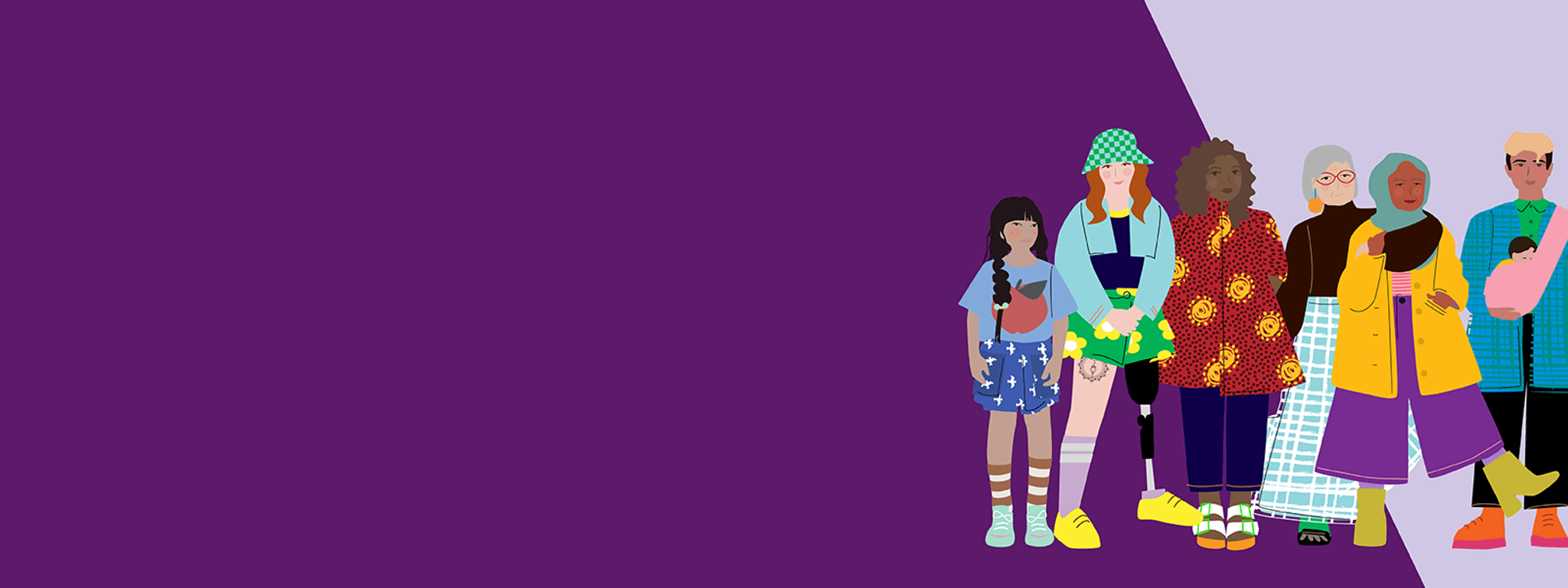cisgender
People whose gender identity matches the societal expectations of their sex assigned at birth. Someone who isn’t trans or gender diverse.
cissexism
Prejudice or discrimination against transgender people.
gender
Part of how you understand who you are and how you interact with other people. Many people understand their gender as being a man or woman. Some people understand their gender as a combination of these, or neither. A person’s gender and their expression of their gender can be shown in different ways, such as through behaviour or physical appearance.
gender diverse
An umbrella term for a range of genders expressed in different ways. Gender diverse people use many terms to describe themselves. Language in this area is dynamic. Particularly among young people, who are more likely to describe themselves as non-binary.
gender equality
The state in which access to rights or opportunities is unaffected by gender. Gender equality is when people of all genders have equal rights, responsibilities and opportunities.
Equality does not mean that women, men, people with intersex variations, and trans and gender diverse people will become the same. Rather, their rights, responsibilities and opportunities will not depend on their gender.
Gender Equality Act 2020
The Gender Equality Act 2020 (the Act) applies to around 300 Victorian public sector organisations, including universities and local councils. The Act requires these organisations to take positive and transparent action towards achieving workplace gender equality, and promote gender equality in the policies, programs and services they deliver to the public. The Act means Victoria has useful tools in place to plan, measure and track progress towards gender equality.
gender equity
In this strategy, gender equality and gender equity are used interchangeably but we acknowledge they are distinct terms.
Gender equity recognises that differences in gender-related needs and power should be identified and addressed in a manner that fixes any imbalances.
gender mainstreaming
Gender mainstreaming remains widely accepted as the most practical means to achieve gender equality and the empowerment of women. It moves gender equality and the empowerment of women and gender diverse people from the margins to the mainstream of decision-making It integrates gender perspectives of all people into all policies, programs, functions and structures of an institution.
gender norms and structures
Gender norms can be thought of as widely held beliefs about how men, women and gender diverse people should behave (or how they should be). Gender norms tend to exaggerate small or perceived differences between men and women into stereotypes that are considered representative of all men and women.
gender stereotypes
Simplistic generalisations about gender attributes, differences and roles.
intersectionality
The concept of intersectional disadvantage or discrimination is sometimes called ‘intersectionality’. It explains how people may experience overlapping forms of discrimination or disadvantage based on attributes such as Aboriginality, age, disability, ethnicity, gender identity, race, religion and sexual orientation. Intersectionality recognises that the causes of disadvantage or discrimination do not exist independently. Instead, they intersect and overlap with gender inequality, making impacts worse while also raising barriers to support.
LGBTIQ+
An acronym for lesbian, gay, bisexual, trans and gender diverse, intersex and queer and others on the spectrum of gender.
man
Inclusive of cis, trans, gender diverse and brotherboys, anyone who identifies as a man.
multicultural community
Refers broadly to the vast number of diverse cultural and ethnic groups in Victoria.
multifaith community
Refers to the diverse faith groups in Victoria.
non-binary and genderqueer
Umbrella terms for gender identities that are not only male or female.
outcomes framework
Gender equality outcomes framework
people with intersex variations
An umbrella term for people born with natural variations to sex characteristics. This includes physical features relating to sex such as genitalia and other sexual and reproductive parts of a person’s anatomy. It might also refer to a person’s chromosomes, hormones and secondary physical features emerging as a result of puberty.
Safe and strong
Safe and strong: a Victorian gender equality strategy was Victoria’s first gender equality strategy, released in 2016.
sistergirl and brotherboy
Aboriginal communities use these terms to describe transgender people and their relationships as a way of validating and strengthening their gender identities and relationships. Non-trans but non-conforming Aboriginal people may also use these terms. For example, both lesbian and heterosexual Aboriginal women may refer to themselves as ‘sistergirls’, ‘sisters’ or ‘tiddas’, which is an Aboriginal English term for the word ‘sisters’. Gay Aboriginal men may also refer to themselves as sisters.
state GEAP
State gender equality action plan.
STEM
Science, technology, engineering and mathematics.
the inquiry
Inquiry into economic equity for Victorian women.
the roadmap
Fair access policy roadmap.
the strategy
This document, Our equal state: Victoria’s gender equality strategy and action plan 2023–2027, also referred to as Our equal state.
transgender (trans) person
A person whose gender does not align with the one assigned at birth. Not all trans people will use this term to describe themselves.
Updated

